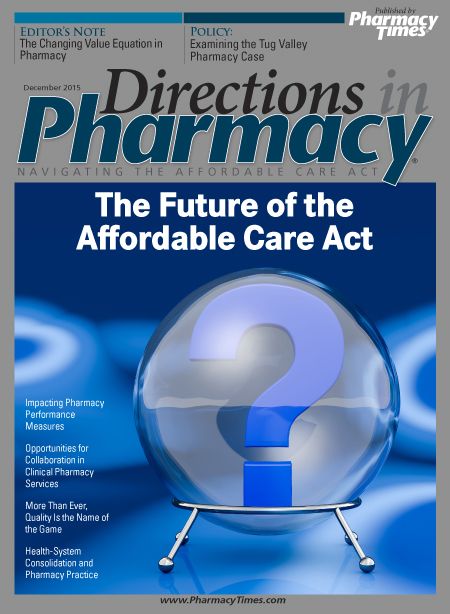Publication
Article
Pharmacy Practice in Focus: Oncology
What Value Does the Future of Pharmacy Hold?
Author(s):
Almost 6 years ago, the Affordable Care Act was signed, a law constructed with the notion of making health care more affordable, accessible, and of higher quality.
Almost 6 years ago, the Affordable Care Act (ACA) was signed, a law constructed with the notion of making health care more affordable, accessible, and of higher quality. Although health reform was well-intended, questions remain about the ACA’s directional effectiveness, with many employers concerned that costs are rising, not abating, and that consumer expectations of coverage and plan design will not be met as insurance products are watered down to accommodate newly covered populations under new regulatory guidelines.
Indeed, the jury is still out on the ACA and much ambiguity remains as to its future implementation and sustainability. Regardless, one of the enduring aspects of the ACA that will likely live on with some certainty is a healthy dialogue on quality over quantity, or value over volume. The recent shift out of the Centers for Medicare & Medicaid Services toward value-based care and reimbursing health care providers for the quality of the care they provide rather than the quantity of patients they serve is profoundly impacting health care and opening the doors for new avenues of care delivery, such as telehealth and retail clinics. Payers are quick to learn where their money is going, while providers have been quick to learn how they will be reimbursed.
This issue of Directions in Pharmacy is dedicated to reviewing the new measures and practices in pharmacy that have developed as a result of the ACA. Articles in this issue address how community pharmacies will be affected in terms of reimbursement, how enacting pay-for-performance measures needs to coincide with recognizing pharmacists as health care providers, and why pay-for-performance plans will need to provide prospective payments for a standard base of services along with a shared savings program determined by each plan.
Patients, who have been compelled to bear the heavy burden of rising health care costs and mandatory coverage regulations, now want to know that their hard-earned money is going toward high quality care. Therefore, we included in this issue an article that explores value-based insurance design and how it rewards evidence-based services and high-performing providers, with the intent of providing improved care to patients. Authors in this issue also discuss how a greater overall focus on health care quality is prompting a focus on medication therapy management programs to improve medication use, and they outline steps pharmacies can take to achieve this.
Another effect of the ACA is health system consolidation. An increased focus on cost and value is also causing health systems to stand up and take notice of the value pharmacists bring to the health care team and the additional services their knowledge and training allow them to provide. The authors in this issue argue that pharmacists should be acknowledged as providers to ensure that their clinical services are sustainable. In addition, we include 2 articles that provide insights into the latest legislation out of West Virginia and Iowa, measures that are tied to assigning a level of accountability to all players in the game.
As we near the end of 2015, a year in which Directions in Pharmacy focused on quality, adherence, advances in health information technology, the patient, and wellness, we look forward to carrying all we’ve learned with us into a new year in which health care will be at the forefront of political debates. Directions in Pharmacy will continue to provide our readership with multiple stakeholder perspectives that offer engaging, thought-provoking, and future state-oriented content.







